The moon has captivated human imagination since our ancestors first looked up at the night sky. This luminous companion has inspired countless stories, shaped religious practices, and influenced agricultural calendars across every inhabited continent. From ancient civilizations to modern cultures, the moon remains a powerful symbol in human consciousness.
Our relationship with the moon goes deeper than mere observation. The lunar cycle, approximately 29.5 days from new moon to new moon, provided early humans with their first reliable calendar. This predictability made the moon a natural subject for mythology, as people sought to explain its phases, its influence on tides, and its mysterious glow in the darkness.
Ancient Mesopotamian Moon Worship
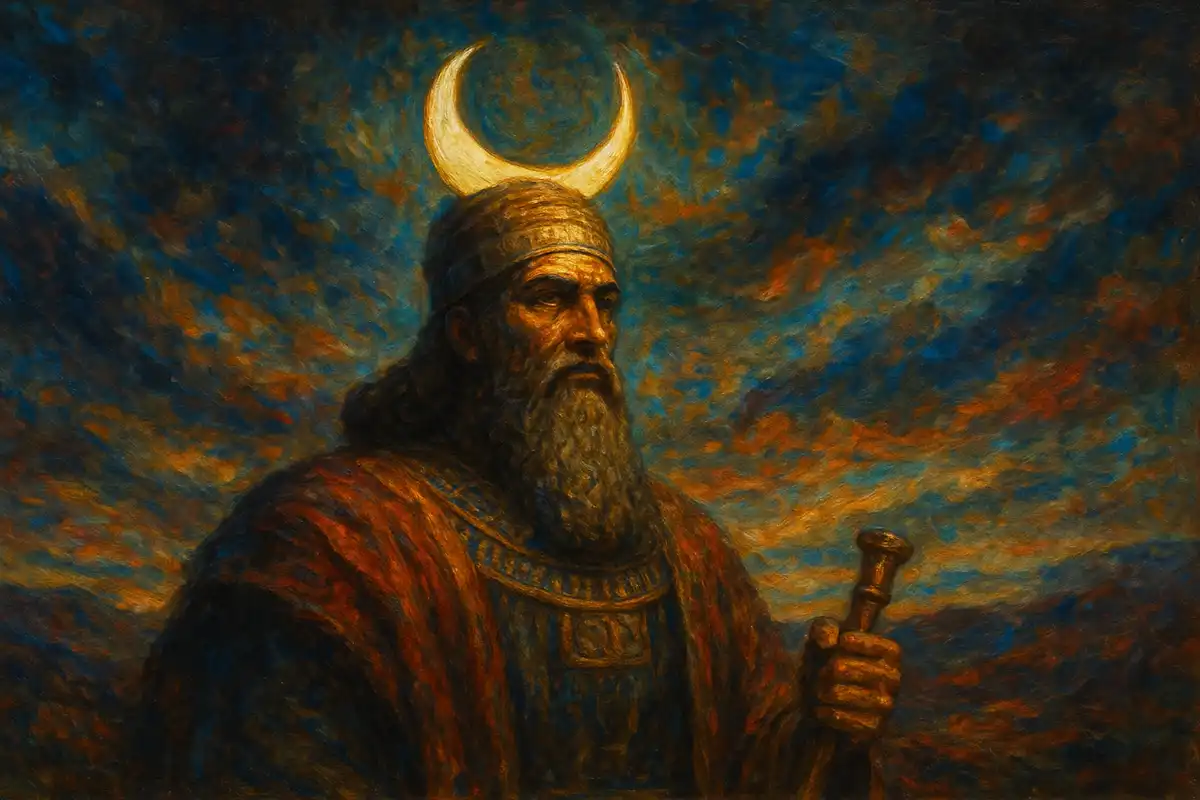
The Mesopotamians developed one of the earliest recorded moon mythologies, centered around the god Sin (also called Nanna). In Sumerian culture, Sin was considered the father of the sun god Shamash and the goddess Ishtar, making him a supreme deity. The city of Ur became the primary center of moon worship around 2100 BCE.
Sin was depicted as an elderly man with a flowing beard, riding across the sky in a boat or chariot. The crescent moon represented his horns, and the Mesopotamians believed each phase of the moon reflected his changing moods and powers. During the new moon, when Sin was invisible, people believed he was journeying to the underworld to determine the fates of the dead.
The ziggurat of Ur, a massive stepped pyramid, served as Sin’s primary temple. Priests tracked lunar cycles meticulously, developing sophisticated astronomical knowledge. They believed that lunar eclipses signaled divine displeasure, prompting elaborate rituals to appease the god and restore cosmic balance.
Egyptian Lunar Deities and Timekeeping
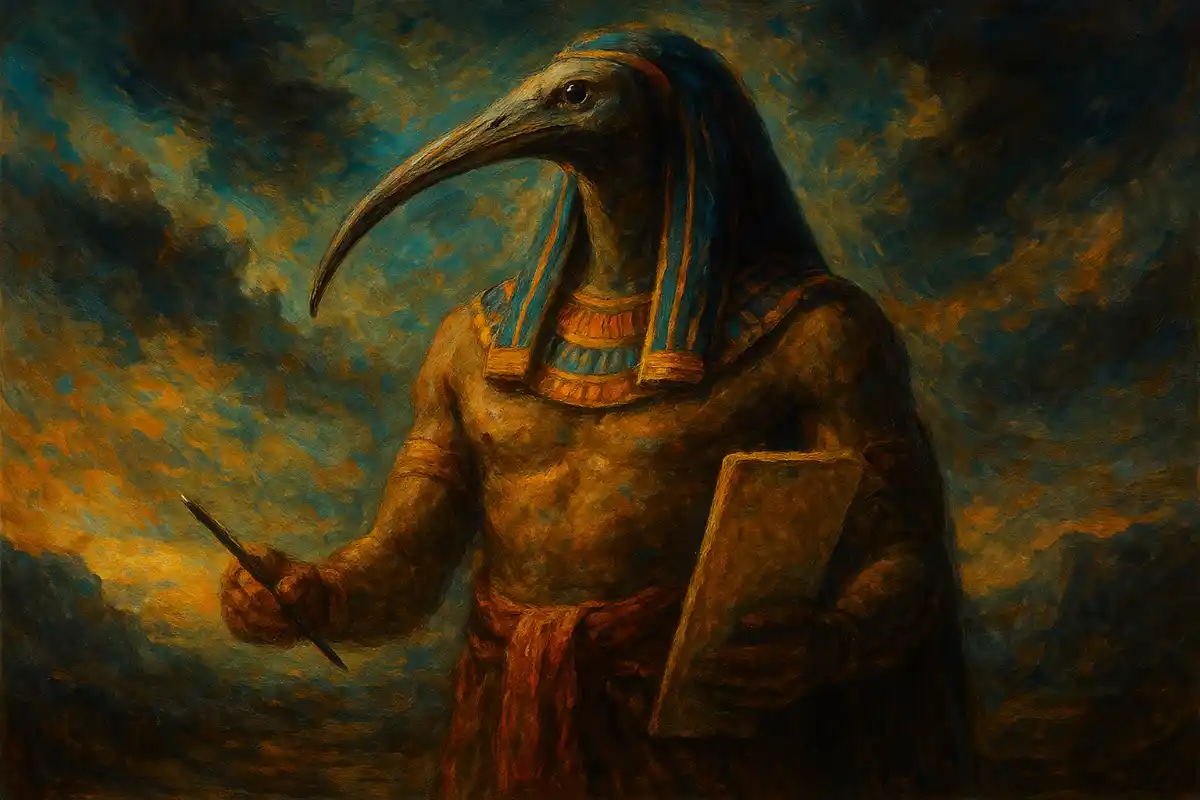
Ancient Egyptians associated the moon with multiple deities, reflecting its complex role in their cosmology. Thoth, the ibis-headed god of wisdom and writing, served as the primary lunar deity. According to mythology, Thoth won five extra days from the moon god Khonsu in a game of senet, allowing the goddess Nut to give birth to her children.
Khonsu himself was depicted as a young man with a side-lock of hair, carrying a crook and flail. His name means “traveler,” referring to the moon’s nightly journey across the sky. Temple inscriptions describe Khonsu as both a fierce warrior who helped the pharaoh defeat enemies and a benevolent healer who could drive away evil spirits.
The Egyptians developed a lunar calendar alongside their solar one, using moon phases to time religious festivals. The monthly cycle influenced agricultural practices, medical treatments, and even court proceedings. Physicians believed certain lunar phases made treatments more effective, a belief that persisted in various cultures for millennia.
Greek and Roman Moon Goddesses
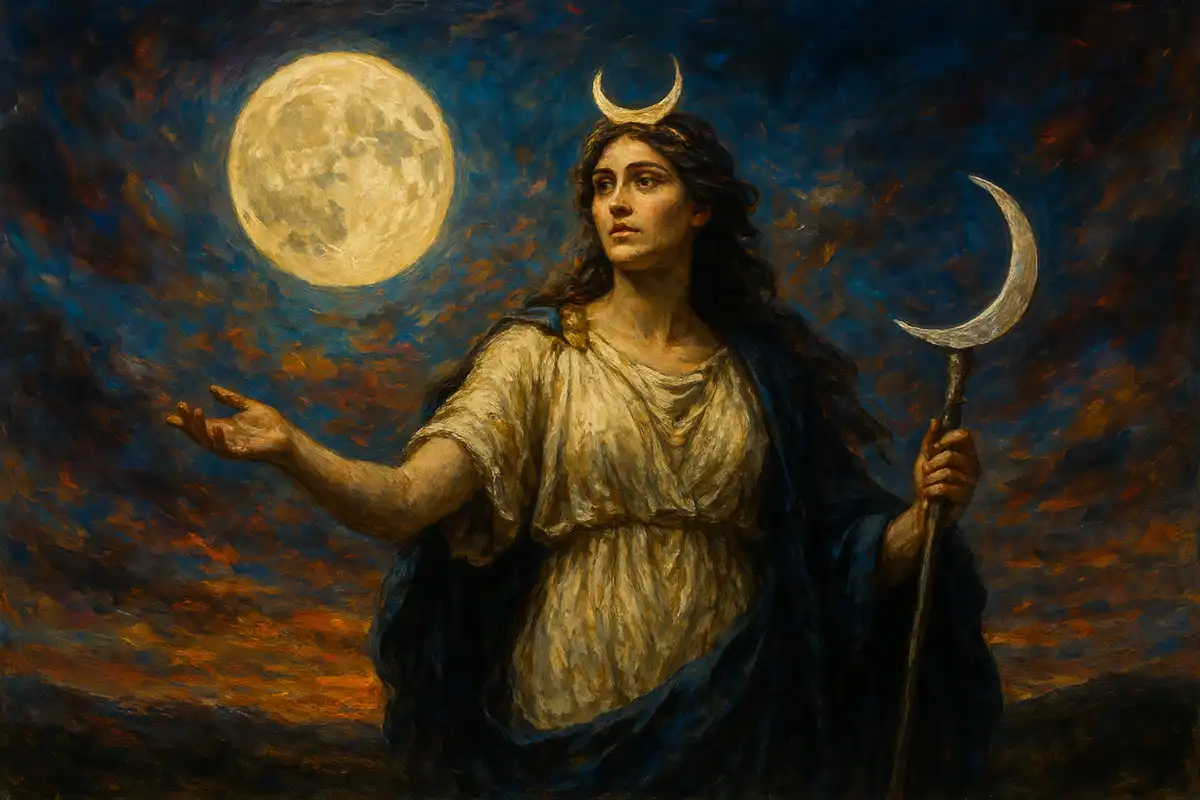
Greek mythology featured several lunar deities, each representing different aspects of the moon. Selene, the Titaness, personified the full moon itself. Ancient texts describe her as a beautiful woman with pale skin, riding a silver chariot pulled by two white horses across the night sky.
The most famous myth involving Selene tells of her love for the mortal shepherd Endymion. She asked Zeus to grant him eternal youth and immortality, but Zeus placed him in an endless sleep. Selene visited him every night in a cave on Mount Latmos, and according to some versions, bore him fifty daughters representing the fifty lunar months of an Olympiad.
Artemis, the virgin goddess of the hunt, became increasingly associated with the moon in later Greek tradition. Romans identified her with Diana, who embodied the moon’s mysterious and wild nature. The crescent moon became Diana’s primary symbol, worn on her head in sculptures and paintings throughout the Roman Empire.
Hecate represented the dark moon and ruled over magic, crossroads, and the spirit world. She was depicted carrying torches and accompanied by howling dogs. Romans believed Hecate walked the earth during moonless nights, leading restless spirits and requiring offerings at crossroads to prevent misfortune.
Hindu Moon God Chandra
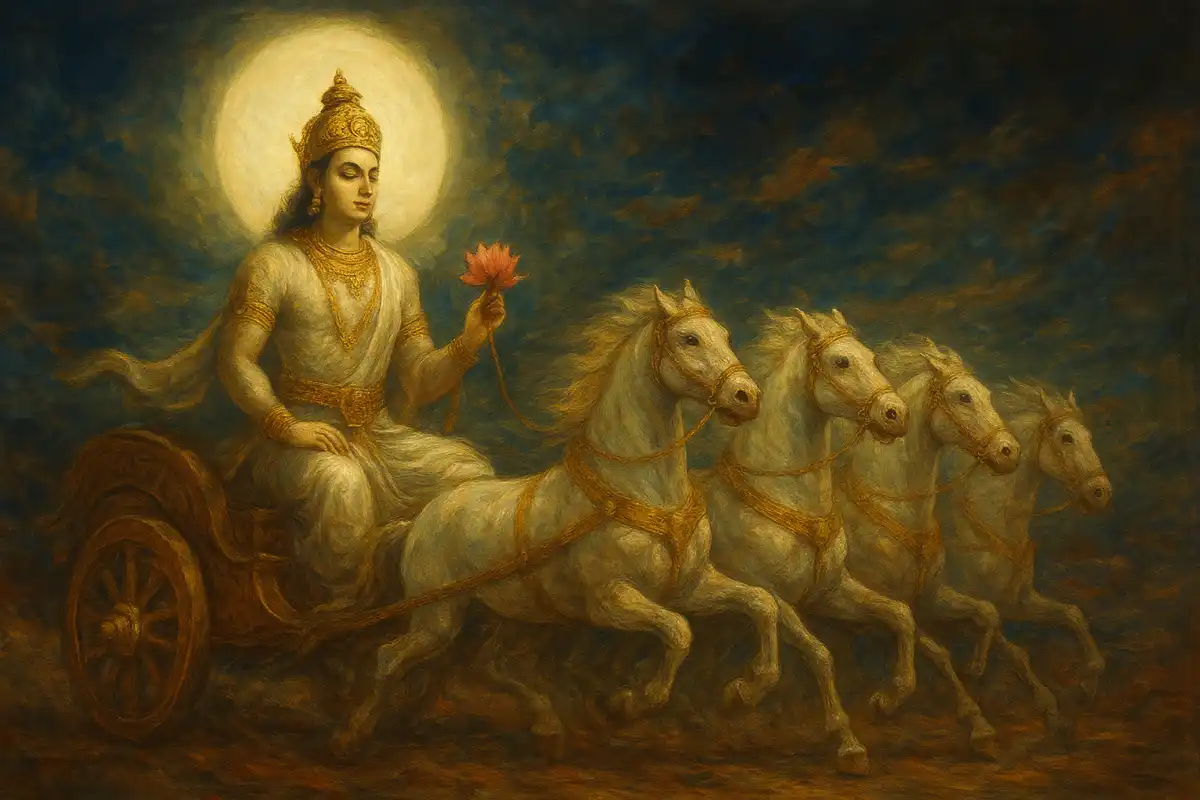
In Hindu mythology, Chandra (or Soma) drives a chariot pulled by ten white horses or an antelope across the night sky. The Vedic texts describe him as a handsome deity who married the twenty-seven daughters of Daksha, representing the twenty-seven lunar mansions (nakshatras) through which the moon passes each month.
Chandra favored his wife Rohini, causing jealousy among the other wives. Their father Daksha cursed Chandra to waste away, explaining the moon’s waning. After the gods intervened, Daksha modified the curse so that Chandra would wax and wane perpetually rather than disappear completely. This myth provides a narrative explanation for the lunar cycle that remains central to Hindu calendar systems.
The Hindu calendar remains lunar-based, with months beginning on the new moon or full moon depending on regional tradition. Major festivals like Diwali and Holi are timed according to lunar phases. Astrologers consider the moon’s position at birth crucial for determining personality traits and life paths, making Chandra one of the nine celestial deities (Navagraha) essential to Vedic astrology.
Chinese Lunar Legends and the Mid-Autumn Festival
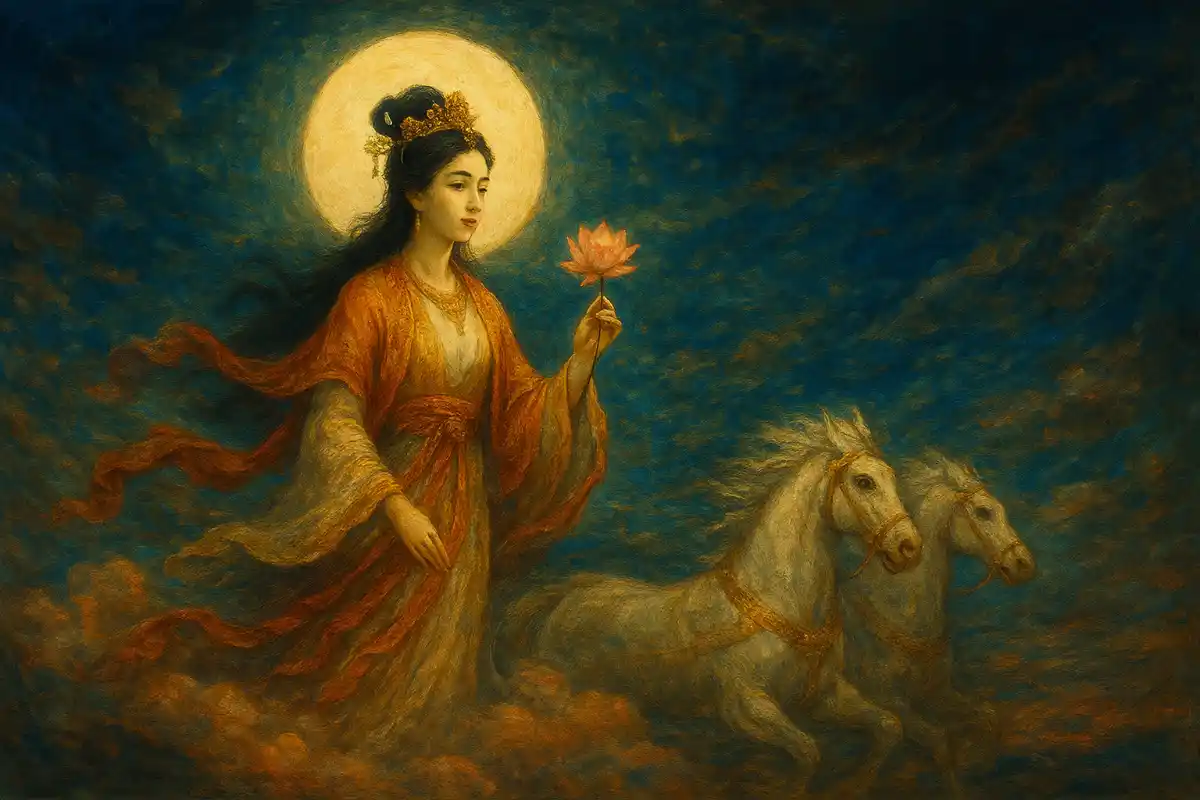
Chinese mythology features Chang’e, the beautiful moon goddess whose story remains beloved across East Asia. According to legend, ten suns once burned in the sky, scorching the earth. The archer Hou Yi shot down nine suns, saving humanity. As a reward, the gods gave him an elixir of immortality.
Hou Yi planned to share the elixir with his wife Chang’e, but different versions of the story diverge here. Some say she drank it to prevent a greedy apprentice from stealing it. Others claim she consumed it accidentally or out of curiosity. Regardless, Chang’e floated to the moon, where she lives eternally in a palace with only a jade rabbit for company.
The jade rabbit, called Yutu, constantly pounds herbs with a mortar and pestle, either creating the elixir of immortality or making rice cakes, depending on the version. Chinese people celebrate the Mid-Autumn Festival on the fifteenth day of the eighth lunar month, when the moon appears fullest and brightest. Families gather to eat mooncakes, light lanterns, and tell stories about Chang’e.
This mythology influenced Chinese space exploration. China named its lunar exploration program “Chang’e,” and its moon rovers “Yutu,” connecting modern science with ancient tradition. The program successfully landed multiple missions on the moon, including the first spacecraft on the lunar far side in 2019.
Japanese Moon Viewing and Tsukuyomi
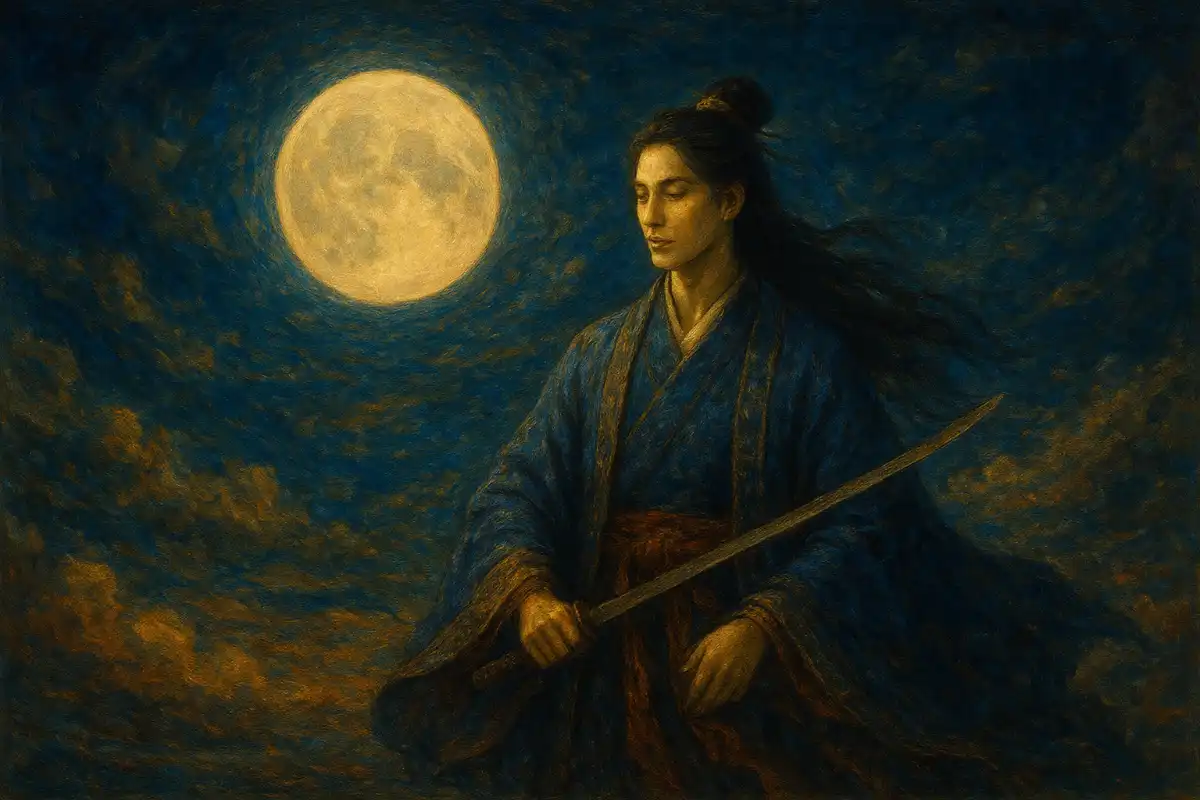
Japanese Shinto tradition features Tsukuyomi, the moon god and brother to the sun goddess Amaterasu. According to the Kojiki and Nihon Shoki, ancient Japanese chronicles, the primordial god Izanagi created Tsukuyomi from his right eye while performing a purification ritual.
One myth explains why the sun and moon occupy different parts of the sky. Amaterasu sent Tsukuyomi to visit the food goddess Uke Mochi. When Uke Mochi produced food by turning to the ocean, forest, and rice paddy and vomiting forth fish, game, and rice, Tsukuyomi was disgusted and killed her. Amaterasu, furious at this disrespect, separated herself from her brother, explaining why the sun and moon never share the sky.
The Japanese practice of tsukimi (moon viewing) dates back over a thousand years. During the harvest season, people gather to observe the full moon, particularly on the fifteenth night of the eighth lunar month. They offer rice dumplings (tsukimi dango) and arrange autumn grasses in honor of the moon. This contemplative practice emphasizes aesthetic appreciation rather than worship.
Norse Lunar Mythology and the Moon’s Pursuit
Norse mythology presents a dramatic explanation for the moon’s movement across the sky. Máni, the moon personified as a male deity, drives a chariot across the heavens. According to the Prose Edda, he was once a mortal whose beauty caught the gods’ attention. They placed him in the sky to guide the moon’s path.
Two wolves eternally pursue Máni through the sky: Hati Hróðvitnisson chases the moon while Sköll pursues the sun. The Norse believed that during lunar eclipses, the wolves temporarily caught their prey. People would make noise and shoot arrows skyward to frighten the wolves away. This tradition persisted in Scandinavian folklore long after Christian conversion.
The Vikings used a lunar calendar alongside solar observations for navigation. They noted that the moon’s position at different times of year helped determine latitude during ocean voyages. The term “fortnight” derives from “fourteen nights,” reflecting the Viking practice of counting time by nights of the moon rather than days.
West African Moon Stories and Deities
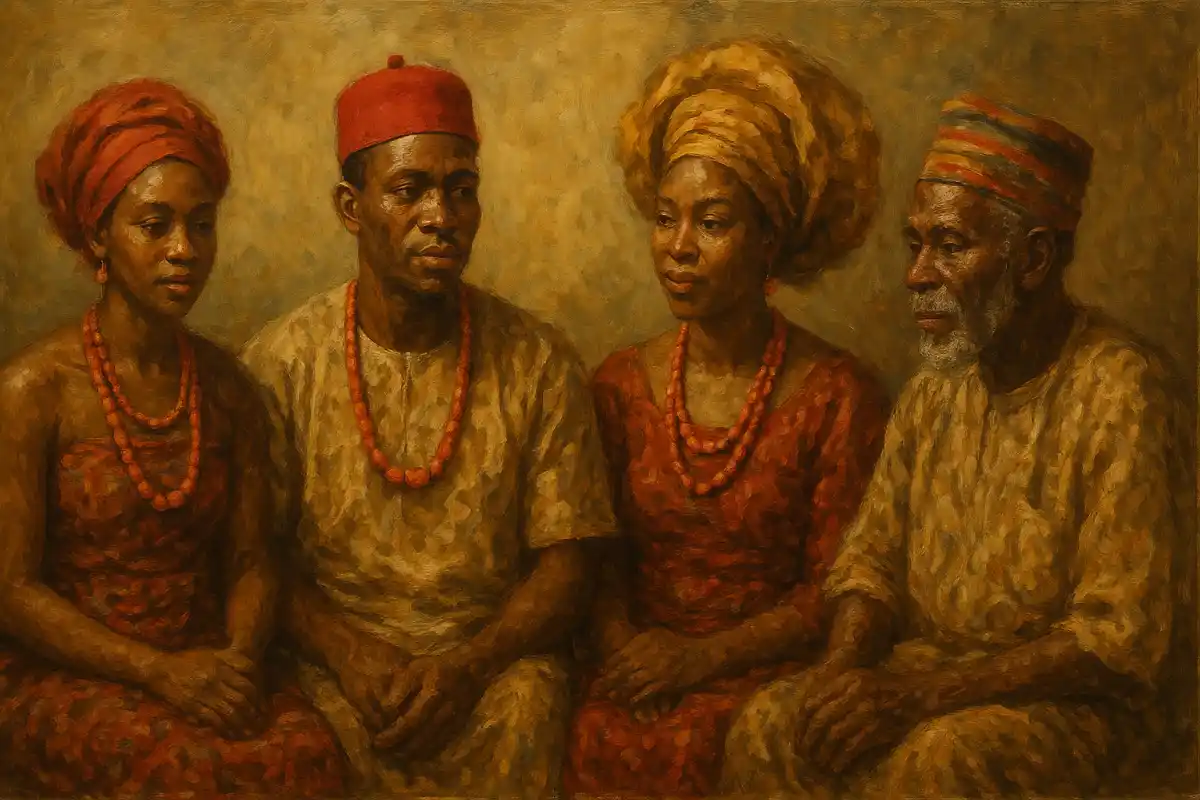
Among the Igbo people of Nigeria, the moon goddess Ogbanje protects travelers and serves as a beacon for those lost in darkness. Igbo tradition teaches that the moon and sun were once married but argued constantly. Eventually, they separated, with the sun claiming the day and the moon accepting the night. The stars are their children, scattered across the sky.
The Yoruba people’s moon deity Osupa appears in numerous stories explaining natural phenomena. One tale describes how the moon once shone as brightly as the sun. The sun grew jealous and threw mud at the moon’s face, dimming its light and creating the dark patches we see today (actually lunar maria, or ancient volcanic plains).
In Ghana, the Akan people traditionally gather for storytelling sessions called “Anansesem” on moonlit nights. The moon provides light for evening work and social activities, making it integral to community life. Farmers plant certain crops according to lunar phases, believing the moon’s pull on water affects germination and growth, a practice that modern studies have shown has some scientific basis.
Native American Moon Traditions
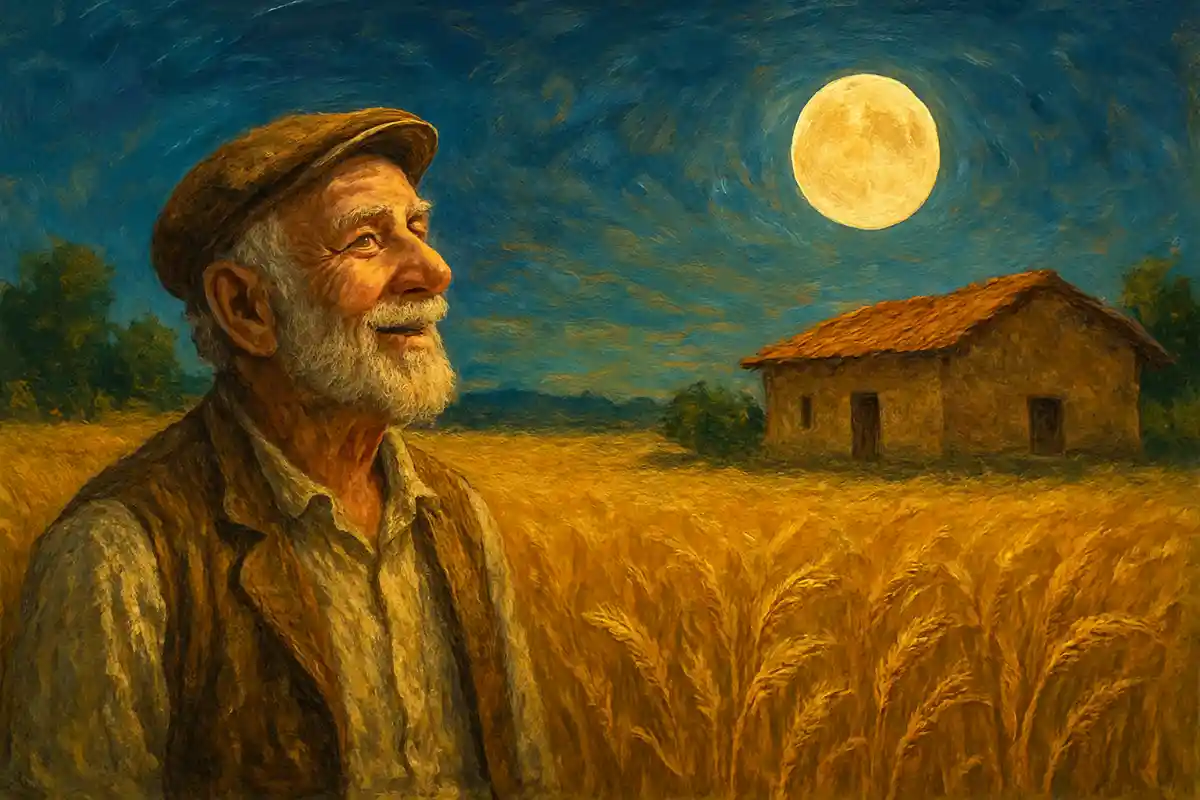
Native American tribes developed diverse lunar mythologies reflecting their different environments and lifestyles. Many tribes named each full moon according to seasonal activities or natural events, creating a practical calendar system that guided hunting, gathering, and planting.
The Cree people of Canada call the January moon “The Spirit Moon,” believing it’s a time when the spirit world comes closest to the living. February brings “The Bony Moon” when food stores run low and even animals grow thin. The Algonquin tribes’ moon names were adopted by American colonial farmers and remain in use today, including the “Harvest Moon” in September and the “Hunter’s Moon” in October.
Cherokee tradition holds that the sun and moon are siblings who live on opposite sides of the sky. In one story, the sun’s daughter died after being bitten by a snake sent by humans who complained about the heat. The sun’s grief caused her to hide in a house, plunging the world into darkness.
The people sent dancers to make her smile, but only after her tears were exhausted did she return to the sky, teaching humans about grief and recovery.
The Lakota people tell of Hanwi, the moon goddess who was once married to the sun god Wi. She attended a feast in the sky uninvited and sat in the place of honor reserved for Skan, the sky spirit. As punishment, Skan separated her from Wi, making her rule the night while he ruled the day. Her shame causes her to cover her face, explaining the lunar phases.
Pacific Northwest tribes, including the Haida and Tlingit, carved moon symbols on totem poles and ceremonial objects. They believed the moon controlled the tides and influenced salmon runs, making it essential to their fishing economy. Elaborate ceremonies honored the moon during important fishing seasons.
Australian Aboriginal Moon Stories
Aboriginal Australians developed complex lunar mythology over at least 65,000 years of continuous culture. Different language groups across the continent tell distinct stories, but many share common themes about the moon’s relationship with the sun and the creation of time.
In Yolngu tradition from Arnhem Land, the moon-man Ngalindi undergoes a monthly death and rebirth. As he grows old and weak, he asks his wives to make him young again. They cut him up and throw him into the sea, where he washes up on an island and emerges three days later as a young man. This story explains the three-day period when no moon is visible.
The Kaurna people of South Australia tell how the moon and sun were once human. They fought over who should light the sky, and the moon lost, explaining why moonlight is dimmer. The moon’s changing face shows the bruises from this ancient battle that never healed.
Aboriginal people used lunar cycles to track seasons and predict resource availability. They observed that certain fish species spawned during particular moon phases and that tides reached their extremes at full and new moons. This knowledge was encoded in songs and stories passed down through generations, creating a sophisticated ecological calendar.
South American Lunar Legends
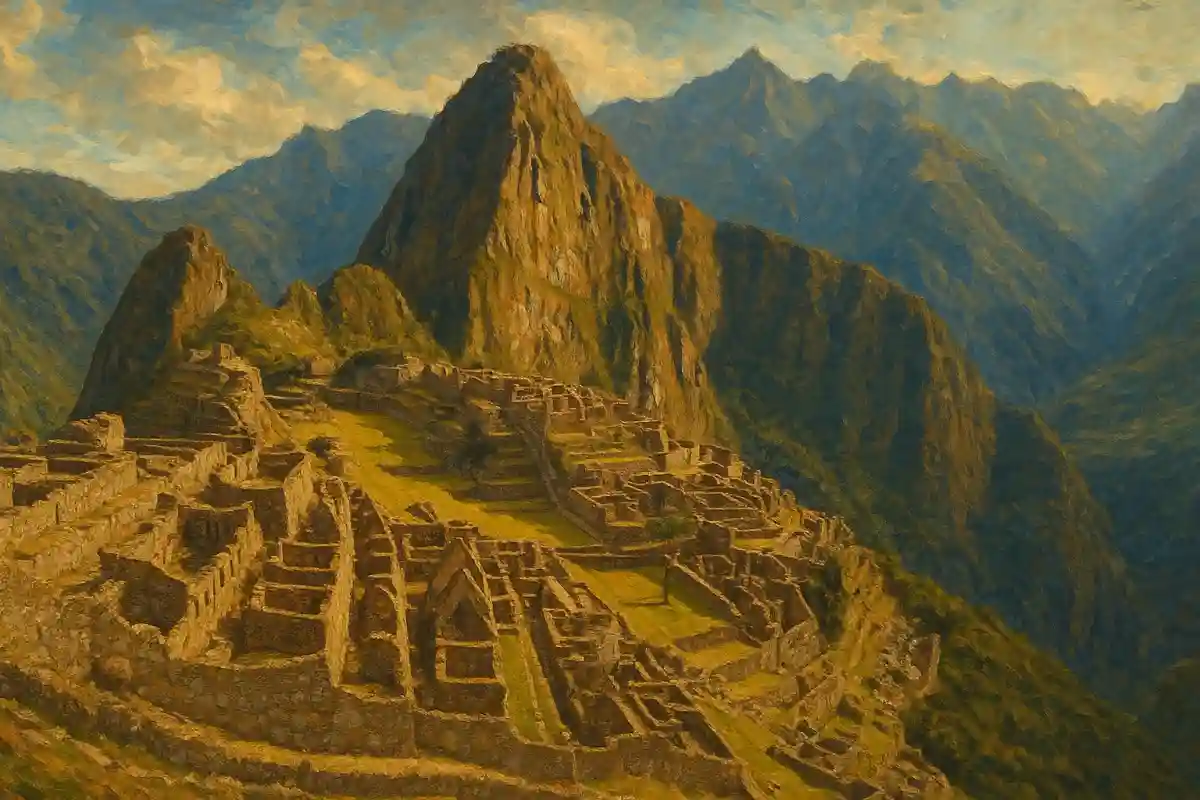
The Inca civilization worshiped Mama Quilla, the moon goddess and wife of Inti, the sun god. She served as the protector of women and the regulator of the ritual calendar. The Incas believed that lunar eclipses occurred when a giant serpent or puma attacked Mama Quilla. During eclipses, people shouted, shook spears, and made dogs bark and howl to scare away the creature.
Mama Quilla’s temple in Cuzco was covered in silver, contrasting with the sun temple’s gold. Priestesses called “virgins of the sun” maintained her worship. They tracked lunar phases carefully because the Inca calendar combined solar and lunar observations, requiring complex calculations to keep religious festivals aligned with agricultural seasons.
Mapuche people of Chile tell of Küyen, the moon woman who controls the waters and influences women’s fertility cycles. She battles with the sun (Antü) to protect humans from excessive heat. When Küyen wanes, she’s growing weak from her efforts. The full moon represents her strength renewed, ready to fight again.
In the Amazon basin, various indigenous groups associate the moon with menstruation, water, and transformation. Some believe the moon’s phases mirror a woman’s monthly cycle, establishing a connection between female fertility and lunar rhythms. While scientific evidence for this connection remains debated, the human menstrual cycle’s average length (28 days) approximates the lunar cycle (29.5 days).
African San People and Lunar Tales
The San people of southern Africa, one of humanity’s oldest continuous cultures, developed rich lunar mythology. In one widespread story, the moon sent the praying mantis to deliver a message of immortality to humans: “As I die and rise again, so shall you.” But the mantis grew tired and asked the hare to deliver the message.
The hare, either through malice or confusion, told humans: “As I die and remain dead, so shall you.” When the moon discovered this betrayal, he struck the hare’s nose with a stick, splitting it. This is why hares have split lips. The story explains human mortality while demonstrating the consequences of failing to fulfill one’s duty.
San rock art, some dating back thousands of years, frequently depicts moon symbols alongside hunting scenes and shamanic visions. The moon appears in trance dances and healing ceremonies, suggesting its importance in spiritual practices. Some San groups believed that successful hunters needed to perform rituals during specific moon phases.
Southeast Asian Moon Mythology
In Thailand and other Theravada Buddhist countries, people celebrate Loi Krathong during the full moon of the twelfth lunar month. While the festival combines Hindu, animist, and Buddhist elements, it centers on honoring the water goddess Phra Mae Khongkha. People float decorated baskets (krathongs) on rivers, releasing negative energy and making wishes to the moon.
Vietnamese legend tells of Cuội, a man who found a magical banyan tree that could resurrect the dead. He brought the tree home but warned his wife never to water it with dirty water. When she forgot and used leftover rice water, the tree began floating toward the moon.
Cuội grabbed onto the roots and was carried along, where he remains today. Vietnamese children are told they can see Cuội and his banyan tree in the moon’s dark patches.
Javanese tradition includes Dewi Ratih, a beautiful moon goddess whose light guides travelers. She’s married to Surya, the sun god, but they live separately. When demons Rahu and Ketu try to devour her, causing lunar eclipses, people beat drums and make noise to scare them away. This tradition continues in some rural areas, blending ancient belief with modern astronomical knowledge.
European Folklore and Superstitions
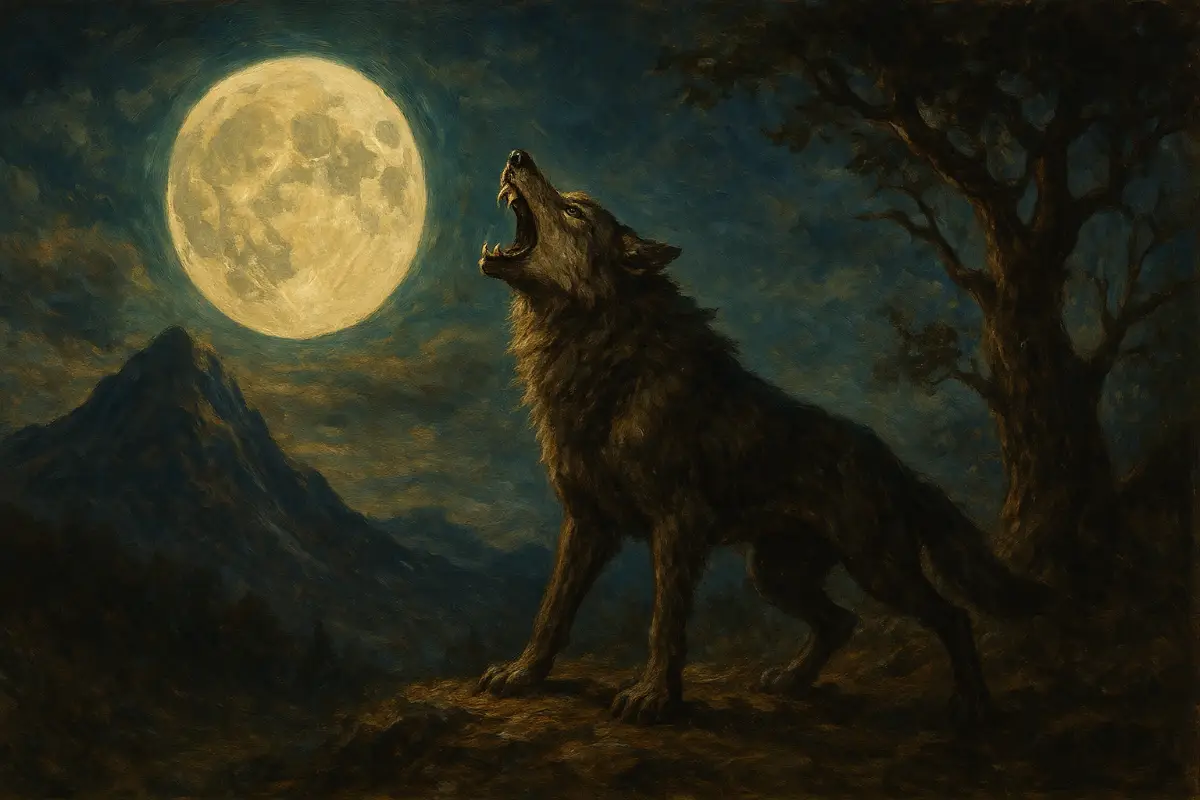
Medieval Europeans developed numerous moon superstitions that persisted into modern times. Planting crops during the waxing moon supposedly encouraged growth, while the waning moon was best for harvesting. The Old Farmer’s Almanac, first published in 1792, still includes moon phase gardening advice based on these traditions.
The full moon’s association with madness gave us the word “lunatic” from the Latin “lunaticus,” meaning “moonstruck.” Medieval physicians believed the full moon exacerbated mental illness and other ailments. While modern studies have largely debunked increased hospital admissions or crime during full moons, the belief remains culturally embedded.
Werewolf legends, prevalent throughout Europe, linked human transformation to the full moon. These stories may have originated from attempts to explain rabies, a disease that causes aggressive behavior and can be transmitted through bites. The transformation during full moons added supernatural drama to these cautionary tales about the dangers lurking in dark forests.
Sailors developed elaborate moon-related superstitions and practical knowledge. They knew the moon governed tides and could predict particularly high or low tides during new and full moons (spring tides). “The moon’s horns” (the crescent moon) pointing upward supposedly indicated fair weather, while downward-pointing horns suggested rain, though scientific validity for these predictions is minimal.
Islamic Calendar and Lunar Observance
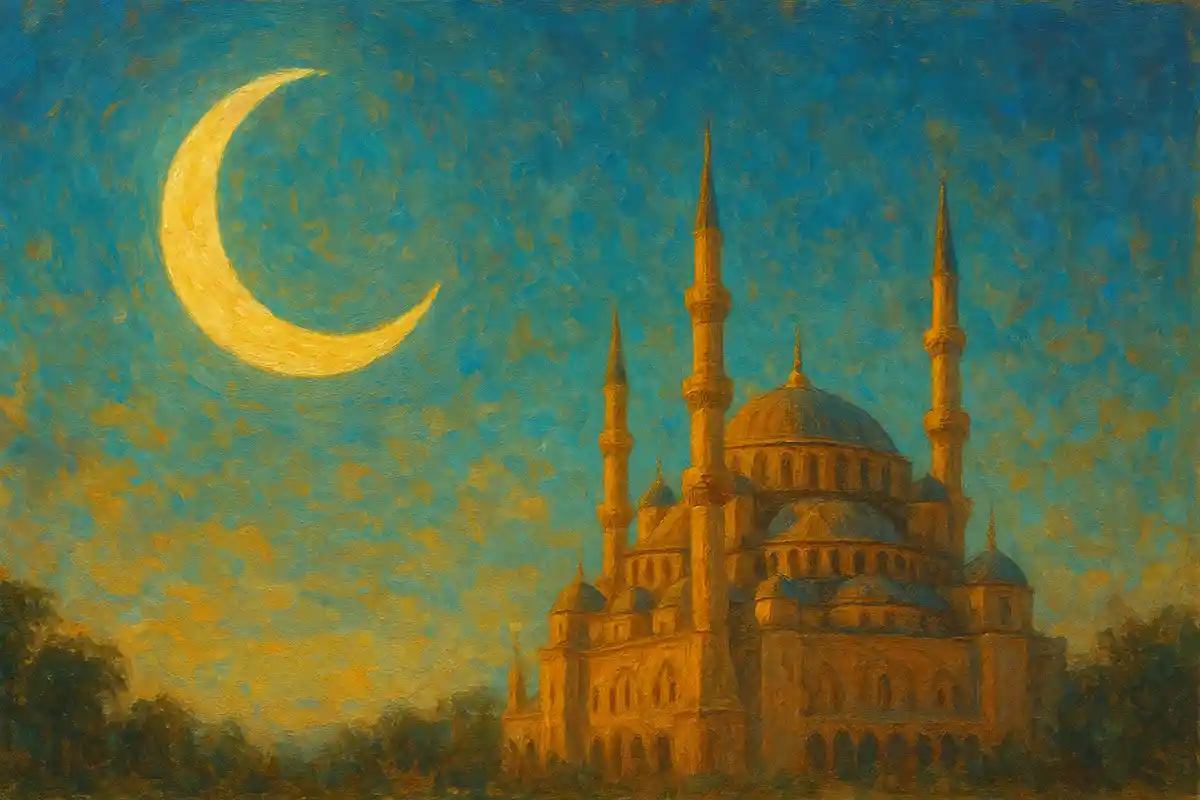
Islam uses a purely lunar calendar for religious purposes, making moon observation central to Islamic practice. The month of Ramadan begins when the new moon crescent is first visible, and Eid celebrations commence with the next new moon sighting. This makes the Islamic year about eleven days shorter than the solar year, causing religious observances to cycle through the seasons.
The Quran mentions the moon’s phases as signs of God’s design and mercy to humanity. Surah 36, verse 39 states: “And the moon We have determined for it phases, until it returns [appearing] like the old date stalk.” This acknowledgment of the lunar cycle emphasizes its role as a divine gift for tracking time.
Different Muslim communities developed traditional methods for moon sighting, with some regions prioritizing physical observation while others use astronomical calculations. This has led to occasional variations in when different communities begin and end Ramadan.
The crescent moon and star became symbols of Islam, appearing on flags of numerous Muslim-majority nations, though this symbol actually predates Islam and was adopted later.
Modern Science and Persistent Myths
Despite our complete scientific understanding of the moon, many ancient beliefs persist. The lunar effect the idea that full moons influence human behavior has been tested extensively. Multiple large-scale studies examining hospital admissions, crime rates, and psychiatric episodes have found no significant correlations with lunar phases, yet the belief remains widespread.
The moon does have measurable effects on Earth. It stabilizes our planet’s axial tilt, preventing extreme climate variations that would make complex life difficult. Its gravitational pull creates tides, which may have played a role in life’s transition from sea to land billions of years ago. The moon is also slowly drifting away from Earth at about 3.8 centimeters per year, a rate precisely measured by laser reflectors placed during the Apollo missions.
Some farmers and gardeners still plant by the moon, believing lunar phases affect crop growth. While plant water uptake might be minimally influenced by the moon’s gravitational pull, scientific studies show soil moisture, temperature, and traditional growing practices have far greater impacts on agricultural success. However, the tradition connects modern farmers with thousands of years of human observation and experimentation.
The Moon’s Continuing Cultural Influence
The moon landing in 1969 represented humanity’s greatest technological achievement and a symbolic moment when ancient dreams became reality. Neil Armstrong’s first steps on the lunar surface fulfilled aspirations encoded in mythology for millennia. Yet rather than diminishing the moon’s mystique, scientific exploration has enhanced our appreciation for our celestial companion.
Contemporary artists, writers, and musicians continue drawing inspiration from lunar imagery. The moon appears in countless songs, poems, and paintings, often representing romance, mystery, or the passage of time. Japanese anime frequently features moon symbolism, Chinese cinema incorporates moon festival themes, and Western romance persistently associates moonlight with love.
Indigenous knowledge about lunar cycles is gaining recognition for its practical and scientific value. Agricultural researchers study traditional lunar planting calendars to understand long-term climate patterns and crop productivity. Fisheries scientists consult indigenous knowledge about moon phase effects on fish behavior, finding correlations that support sustainable fishing practices.
The moon remains humanity’s shared heritage, visible to everyone regardless of location, language, or belief system. While our ancestors created thousands of different stories to explain the moon’s mysteries, they all recognized its importance to human life. These myths connect us to our past while the moon itself continues lighting our path into the future, just as it has for countless generations before us.
